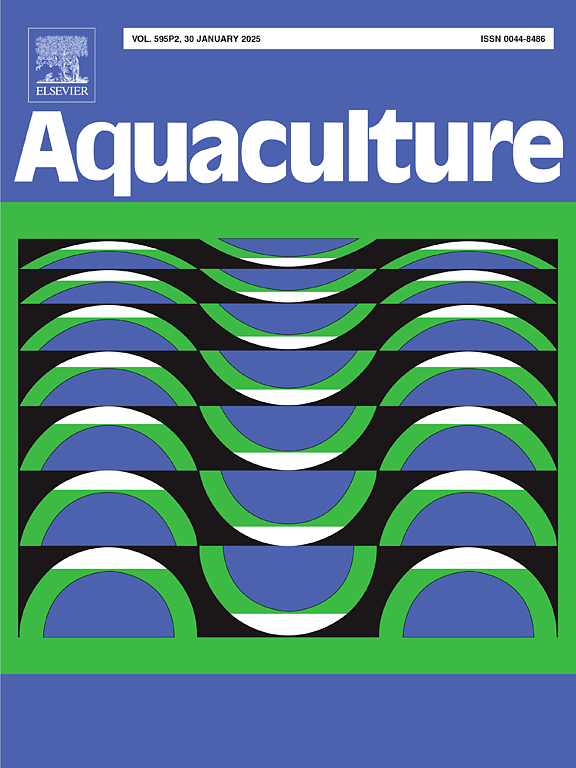Effective control of Neobenedenia girellae infestation by an optimized oral protocol in greater amberjack juveniles (Seriola dumerili)
IF 3.9
1区 农林科学
Q1 FISHERIES
引用次数: 0
Abstract
Infestations by Neobenedenia girellae constitute significant challenges to the culture of greater amberjack (Seriola dumerili), a promising species for aquaculture diversification. The impact of these infestations is further amplified by global ocean warming, underscoring the urgent need for effective prevention and control measures. This study assessed the efficacy of different praziquantel (PZQ) treatments on growth performance, muscle kinetic profiles (Experiment 1), and their ability to control N. girellae infestations in S. dumerili juveniles reared in an open seawater system (Experiment 2). In Experiment 1, six treatments were tested: T1 (Control), T2-PZQ 2.25 %-1 (450 mg PZQ/kg live weight, single dose), T3-PZQ 1.125 %-2 (225 mg PZQ/kg live weight, 2 days), T4-PZQ 0.75 %-3 (150 mg PZQ/kg live weight, 3 days), T5-PZQ 0.75 %-2 (150 mg PZQ/kg live weight, 2 days), and T6-PZQ 0.75 %-1 (150 mg PZQ/kg live weight, single dose). In Experiment 2, protocols T1–T4 were evaluated. Results indicated that growth performance was unaffected by PZQ treatments, and muscle PZQ concentrations returned to baseline within 48 h post-administration. Protocols T3–1.125 %-2 and T4–0.75 %-3 exhibited the highest efficacy against N. girellae adults, achieving 91 % and 99.8 % parasite reduction, respectively. The protocol involving 150 mg PZQ/kg administered over three consecutive days proved to be the most effective for managing N. girellae infestations, without compromising fish growth and with minimal muscle residue persistence.
求助全文
约1分钟内获得全文
求助全文
来源期刊

Aquaculture
农林科学-海洋与淡水生物学
CiteScore
8.60
自引率
17.80%
发文量
1246
审稿时长
56 days
期刊介绍:
Aquaculture is an international journal for the exploration, improvement and management of all freshwater and marine food resources. It publishes novel and innovative research of world-wide interest on farming of aquatic organisms, which includes finfish, mollusks, crustaceans and aquatic plants for human consumption. Research on ornamentals is not a focus of the Journal. Aquaculture only publishes papers with a clear relevance to improving aquaculture practices or a potential application.
 求助内容:
求助内容: 应助结果提醒方式:
应助结果提醒方式:


